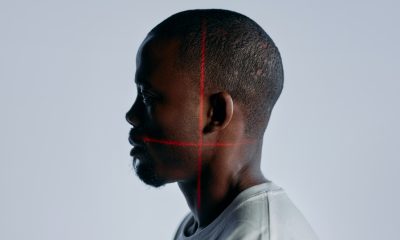By Danny Halpin via SWNS
Saturn's rings could have been formed by a missing moon that smashed into the planet around 160 million years ago, scientists believe.
And the absent moon, called Chrysalis, might also explain why the planet tilts slightly in its spin.
Chrysalis used to orbit Saturn for several billion years before it smashed into the planet and broke apart.
Researchers from the Massachusetts Institute of Tehnology (MIT) said this could also explain the origin of Saturn’s famous icy rings, which are estimated to be about 100 million years old, far younger than the planet itself.
These icy rings that orbit the equator show clearly that Saturn spins at a tilt, at 26.7 degrees, and astronomers have long thought that this tilt comes from gravitational interactions with its neighbor, Neptune.
The belted giant precesses, or wobbles, like a spinning top at nearly the same rate as the orbit of Neptune, though slightly out of synch.
Publishing their work in the journal Science, the team at MIT said that Chrysalis, what would have been Saturn’s 84th moon, pulled and tugged on its parent in a way that kept its tilt, or obliquity, in resonance with Neptune.
But the loss of its gravitational influence since its destruction has meant that Saturn and Neptune have fallen out of synch.
“Just like a butterfly’s chrysalis, this satellite was long dormant and suddenly became active and the rings emerged," said Professor Jack Wisdom of MIT and lead author of the study.
In the early 2000s, scientists suggested that Saturn’s tilted axis is a result of the planet being trapped in a resonance, or gravitational association, with Neptune.
But observations taken by NASA’s Cassini spacecraft, which orbited Saturn from 2004 to 2017, revealed that Titan, Saturn’s largest satellite, was migrating away from Saturn faster than expected, at a rate of about 11 centimeters per year.
Titan’s fast migration, and its gravitational pull, led scientists to conclude that the moon was likely responsible for tilting and keeping Saturn in resonance with Neptune.
But this explanation relies on one major unknown: Saturn’s moment of inertia, which is how mass is distributed in the planet’s interior.
via GIPHY
Saturn’s tilt could behave differently, depending on whether matter is more concentrated at its core or toward the surface.
“To make progress on the problem, we had to determine the moment of inertia of Saturn," Wisdom said.
In their new study, Wisdom and his colleagues looked to pin down Saturn’s moment of inertia using some of the last observations taken by Cassini in its Grand Finale, a phase of the mission during which the spacecraft made an extremely close approach to precisely map the gravitational field around the entire planet.
The gravitational field can be used to determine the distribution of mass in the planet.
Wisdom and his colleagues modeled the interior of Saturn and identified a distribution of mass that matched the gravitational field that Cassini observed.
Surprisingly, they found that this newly identified moment of inertia placed Saturn close to, but just outside the resonance with Neptune. The planets may have once been in sync but are no longer.
“Then we went hunting for ways of getting Saturn out of Neptune’s resonance," Wisdom said.
The team ran simulations to explore whether any natural instabilities among the existing satellites could have influenced the planet’s tilt. This search came up empty.
So, the researchers re-examined the mathematical equations that describe a planet’s precession, which is how a planet’s axis of rotation changes over time.
Because all of Saturn’s moons contribute to one expressions in the equation, the team reasoned that if one of them were removed from the sum, it could affect the planet’s precession.
So Wisdom and his colleagues ran simulations to work out the properties of the moons, like mass and orbital radius, which is the distance at which it orbits a body.
They also worked out the mechanics of what would be required to knock Saturn out of its resonance with Neptune.
They concluded that Saturn’s present tilt is the result of the resonance with Neptune and that the loss of the satellite, Chrysalis, which was about the size of Iapetus, Saturn’s third-largest moon, allowed it to escape the resonance.
The researchers said that sometime between 200 and 100 million years ago Chrysalis entered a chaotic orbital zone.
It experienced a number of close encounters with Iapetus and Titan, and eventually came too close to Saturn, which ripped the satellite to pieces and left a small fraction circling the planet as debris.
The loss of Chrysalis, they said, explains Saturn’s precession, and its present-day tilt, as well as the late formation of its rings.
“It’s a pretty good story, but like any other result, it will have to be examined by others," Wisdom said.
“But it seems that this lost satellite was just a chrysalis, waiting to have its instability."

 Parenting7 days ago
Parenting7 days ago
 Lifestyle6 days ago
Lifestyle6 days ago
 Good News2 days ago
Good News2 days ago
 Broadcast1 week ago
Broadcast1 week ago
 Health3 days ago
Health3 days ago
 Broadcast1 week ago
Broadcast1 week ago
 Money1 week ago
Money1 week ago
 Wildlife2 days ago
Wildlife2 days ago






















